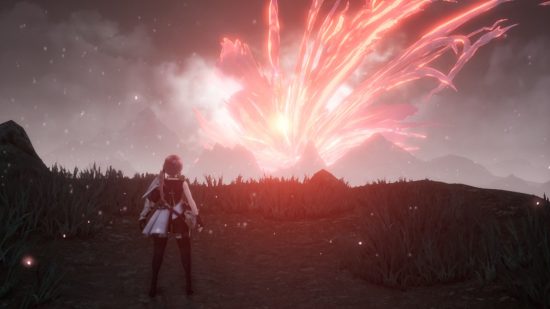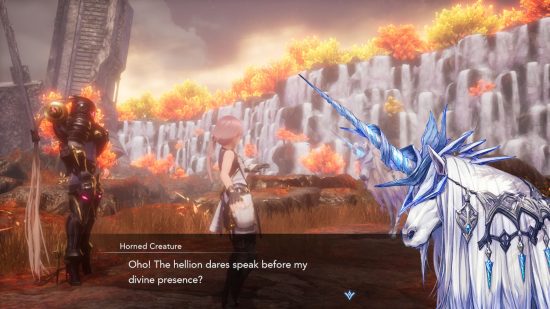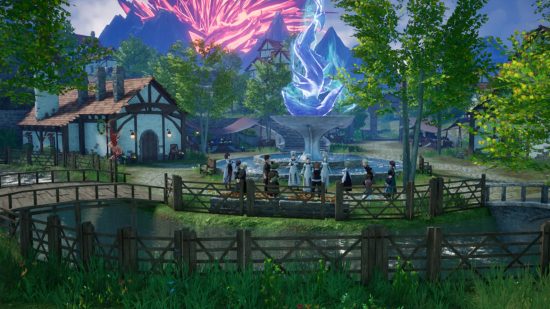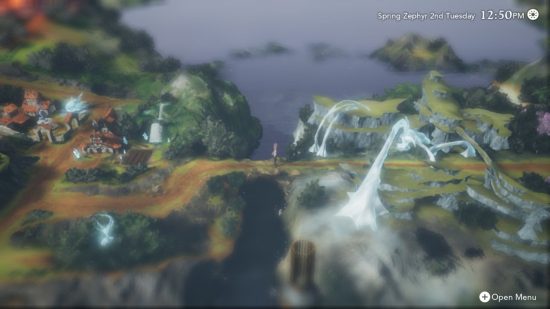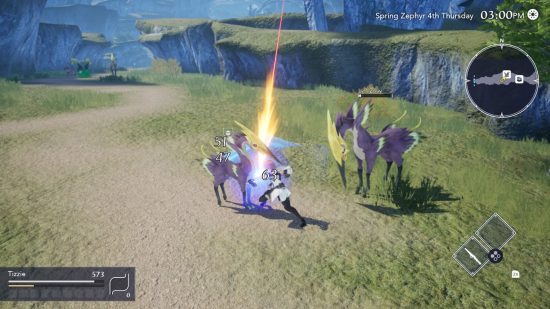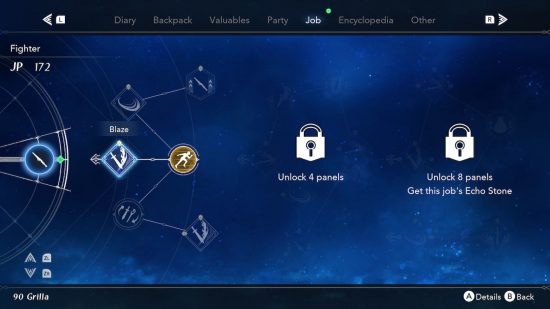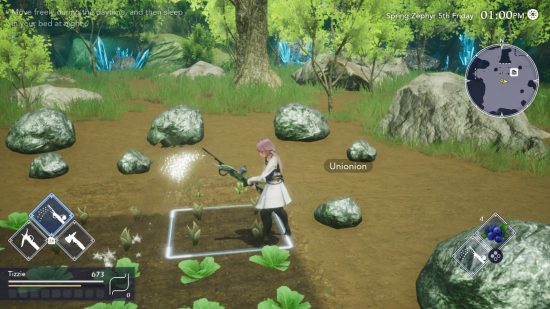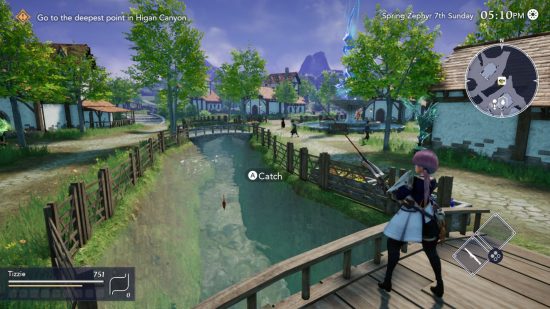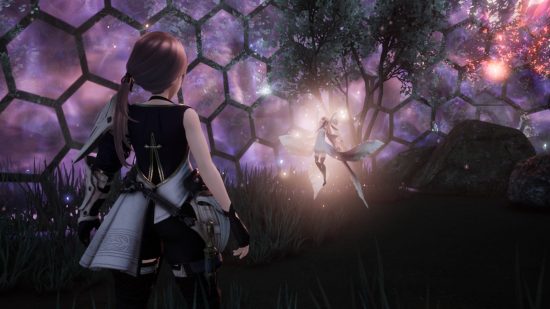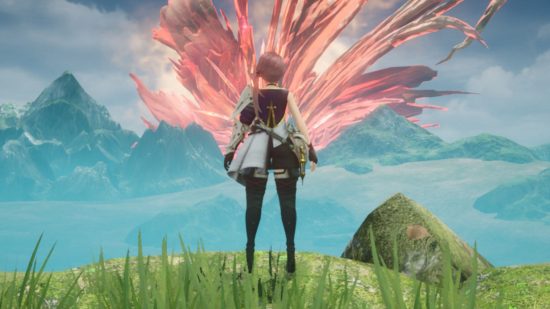Harvestella review in progress – time travel, tears, and turnips
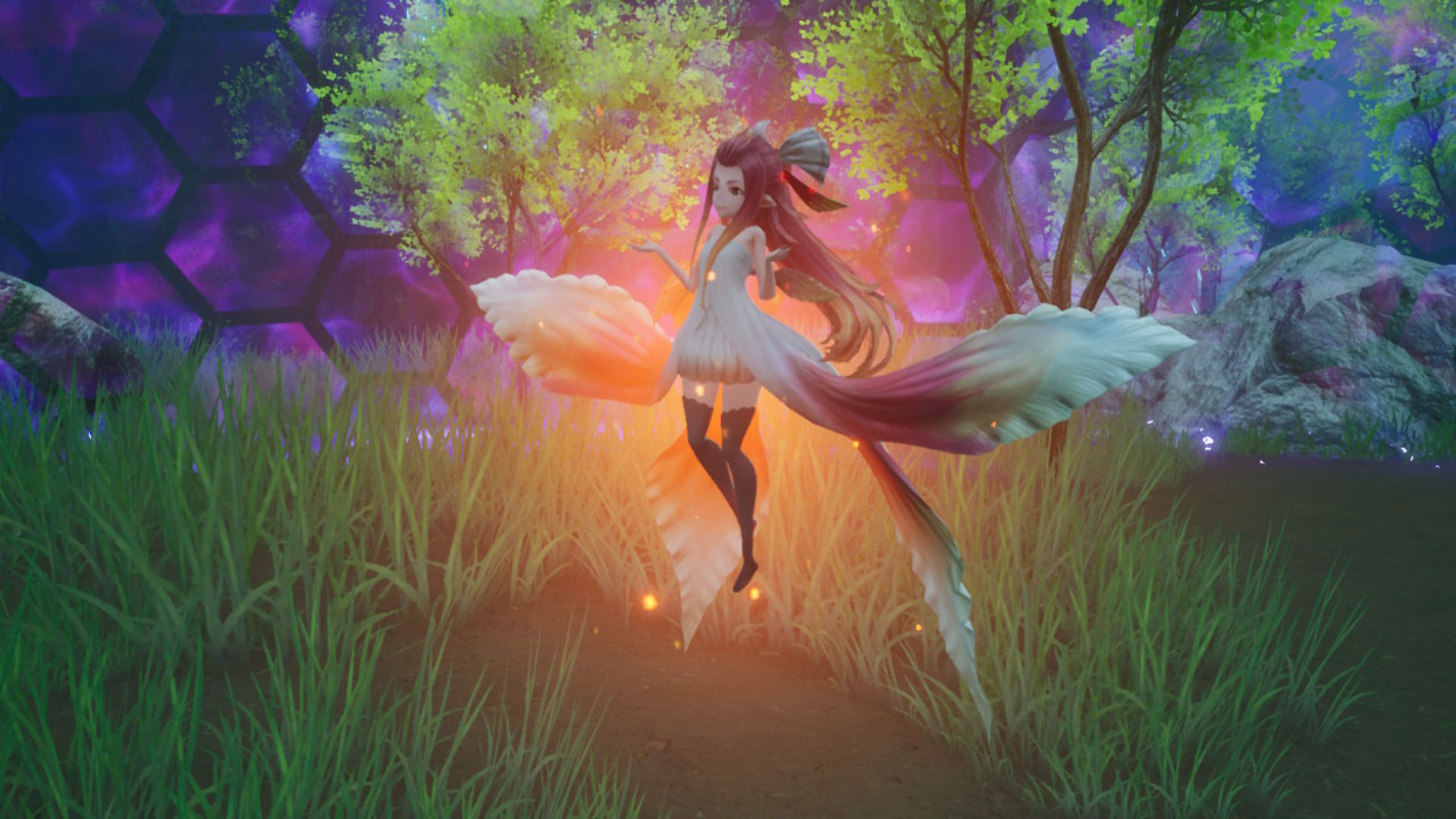
As a massive fan of Square Enix, JRPGs, and farming sims, it’s safe to say that Harvestella is one of my most highly anticipated games of 2022. So, naturally, I jumped at the opportunity to dive into this exciting new experience on Nintendo Switch. Unfortunately, we weren’t able to get our paws on a copy until roughly two days before launch, and, as you can expect from such a colossal title, that’s nowhere near enough time to truly get to grips with its wonderful world.
So far, I’ve completed the first three chapters of the game and have played for roughly seven to eight hours (pretty much every free moment I’ve had between work and sleep). And, in typical JRPG style, I feel as though I’ve barely gotten past the tip of the iceberg in all that time. Tutorials are still popping up left and right, new mechanics are shimmying their way into my daily routine, and I still feel that sense of tutorial-esque limitation, with my freedom being finite and dependent on where the game wants me to go.
That doesn’t in any way mean that I’m not thoroughly enjoying my time with Harvestella so far. I’ve been wholly sucked into its world and can’t wait to see where it takes me. However, with so little time to explore the bountiful mechanics, dungeons, and stories on offer, I can’t provide a definitive review just yet. As such, I’m only going to share my initial impressions with you today, and will develop this into a full review with a score when I’ve had a solid weekend of donning my farming overalls and sharpest sword.
To start off with, Harvestella has a unique narrative that takes some of the familiar tropes JRPG and Square Enix aficionados should be very familiar with, while also applying its own twist. It begins with probably the most common trope from the RPG genre – you’re an amnesiac, and you don’t remember how you got here. What a surprise.
However, as you begin to piece together this unfamiliar world, you discover that you’re pretty darn special. Somehow you managed to survive being outside during a phenomenon called ‘Quietus’, which comes about between every season and kills just about everything in its path. The townsfolk blame this phenomenon on creatures they call ‘Omens’, so when one crash lands in the village along with a giant shiny meteor, you naturally go inside and save them (much to the chagrin of your new acquaintances).
From here, you’re sucked into a grand, heartfelt narrative so complex that nobody seems to have a clue what’s going on. Tangled up in a tale of war, death, and new life, you find yourself at the heart of some pretty big conflicts while still trying to remember to water your cabbages every morning.
Honestly, the story is so over-complicated and off the wall at this point, introducing new characters, cryptids, fairies, time travellers, and more in every other scene, that I genuinely have no idea what’s going on. What I do know, however, is that I absolutely love it.
One thing that does disappoint me about the narrative, though, is the lack of voice acting. The only audible dialogue comes in fleeting, non-committal lines, such as a party member informing you that their health is low, or a shopkeeper greeting you. This leaves hours of walls of text in cutscenes, with nothing but the (admittedly lovely) background music to fill the silence.
While I understand that, given the amount of dialogue and story in the game, getting a team of actors to fully voice it would be a colossal task, the absence of voice acting in even the most important cutscenes feels a little cheap, especially for a full price, triple-A game.
Okay, so let’s talk about the most obvious factor – Harvestella is beautiful. In fact, it’s downright stunning. The environmental design sets up breath-taking landscapes, idyllic towns, and cosy interiors, all of which truly capture the essence of Square Enix’s signature style, while still offering enough individuality and variety to nurture your desire to explore. This is all backed up by a stellar orchestral soundtrack that really fits the vibe of every scene.
The character and enemy designs are also wonderful. There’s a great breadth of variety, from the normal townsfolk and their wizardly mayor, to the heavily armoured Omens, and even an absolutely delightful unicorn adorned with jewels. I’ve not come across a particularly wide range of enemies yet, but those I have seen fit perfectly into the world, with designs that complement their elements and combat styles well.
Additionally, the overworld map is a delight. Harvestella isn’t an open world game, instead consisting of different locations such as Lethe Village, your farm, Njord Steppe, and Jade Forest. You access each of these easily by running from location to location in a beautiful overworld map, which you can later traverse quicker by purchasing absolutely adorable mounts.
Admittedly, you’re pretty restricted when it comes to what locations you can visit and how much you can explore them up to (and likely beyond) the point I’ve reached in the game. Still, I have high hopes that, as the overworld map expands and new locations unlock, Harvestella will continue to meet these high standards.
Locations are often relatively linear, with some twisting paths and hidden treasures dotted along the main route. When exploring places like Njord Steppe or Higan Canyon (which the game, for some reason, refers to as ‘dungeons’), you must remain mindful of the passage of time, as if it gets to midnight and you’ve not yet made it to your bed (or you get slain by an enemy), you pass out from exhaustion and have to pay a fee for your medical treatment.
Luckily, you can activate waypoints which allow you to save and teleport within the location you’re currently exploring, or back to your home. You can also fix ladders and bridges to open shortcuts you can use the next time you visit the area. This means that, should you need to go back to your home for a nap, or run to the store to get some items, you don’t have to do as much legwork to get back to where you left off.
This mechanic took me a little while to get into the rhythm of, as a fast-moving in-game clock feels common in a life sim, but a little out of place when you’re exploring new lands and felling foes. However, with a little trial and error, I’ve come to love being able to freely break up my adventures, popping back home to tend to my crops or have a chat with a villager.
Harvestella’s combat is very interesting, if not a little limited to begin with. Following the classic real-time action combat formula as opposed to turn-based, you’re free to run around attacking monsters or running out of range if you’ve bitten off more than you can chew. Your combat style is dictated by which job you have equipped, with a variety of new abilities opening up later.
You start with the fighter job, with your offensive abilities relying solely on smashing one button to swing a one-handed sword, and no combos in sight. As you continue to fight, you earn job points, which you can use to unlock new skills and passives. To use a skill on Switch, you have to hold down the ZR trigger, then hit the corresponding button. This feels a little clunky, and I would prefer having skills tied to specific buttons to fit in with the action style of the combat, but you get used to it with time.
Throughout the game, you gain access to new jobs, which are essentially classes. The second one you get your hands on is the mage, which offers a bit more range than the fighter at base level, and applies elemental damage instead of physical. You can switch jobs on the fly during battle by holding the TZ trigger and pressing the corresponding directional arrow.
Once again, this feels clunky at first, but it does offer some interesting flexibility in battle and encourages you to strategise as you move between targets, exploiting their weaknesses. However, each job has its own job points, which you can only earn by defeating enemies with that specific job, and unlocking a skill or passive for one job doesn’t unlock it for the others. This isn’t a problem most of the time, but having to unlock a very basic combat staple like dodging in each class is quite frustrating when you’re starting off.
Outside of exploring these locations and fighting enemies, there is, of course, the farming and life sim side of Harvestella. At the beginning of the game, you’re given your own home with a plot of land outside, which becomes your centre of operations. Inside the house, you have stations to unlock for crafting, cooking, and more. Outside, you’ve got a small field where you can grow and harvest crops, and two pens which you can later upgrade and use to keep livestock.
As with combat, farming controls initially feel a bit odd, and take some time to adjust to. Your staple tools are a hoe for tilling the ground, a bizarre water gun contraption used for hydrating your crops, and, once you craft it, a hammer for breaking up rocks that get in your way. You cycle between tools by, once again, holding the trigger, then pressing the corresponding button, then planting the seeds you have equipped by pressing X.
Outside of that, the crafting, fishing, and cooking mechanics are a nice addition, and can be very useful at times, but they’re very simple and formulaic. Additionally, all three can be quite costly to upgrade and fully explore, plus recipes are pricey and hard to come by so far. This is especially painful considering your satiety level and how the stamina system works. If your stomach is empty, your stamina doesn’t replenish by itself. You use your stamina when farming, running, fighting – well, when doing just about anything other than sitting there staring at your surroundings.
Sure, you can eat some of the crops you grow, but they offer such minimal health and stamina restoration that you’re better off selling them to bring in some cash. As a result, I found myself desperately rationing the sandwiches Cres sent me in the post while scrimping enough cash and ingredients to purchase the kitchen counter upgrade and make myself a couple of stir fries. I’m sure this won’t be so much of a problem as I progress through the game, but it was a pain in the first few hours of my playtime.
So far, the farming and life sim elements certainly feel as though they take a backseat to the narrative, exploration, and combat. For those of you who have spent many hours on pure farming sims like Wylde Flowers, Stardew Valley, and others, you’ll likely feel quite restricted, especially in the early game.
However, I’m still enjoying expanding my farm, and am looking forward to further exploring these mechanics as the game progresses – I only hope they get a bit more development as time goes on, rather than devolving into a tacked-on time sink to stress about at the start of every in-game day.
And that’s all my thoughts on Harvestella so far. Despite some shortcomings and clunky mechanics, it’s shaping up to be a truly memorable experience, and I’m very excited to see where it goes. Be sure to check back next week, at which point I intend to be a true farmin’ and fightin’ expert. But, if you can’t wait until then, be sure to check out our Harvestella characters, Harvestella cooking, and Harvestella romance guides to start your adventure on the right foot. I wish you a happy harvest.

